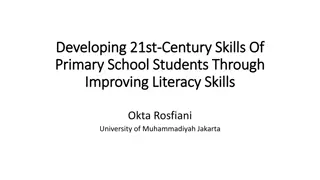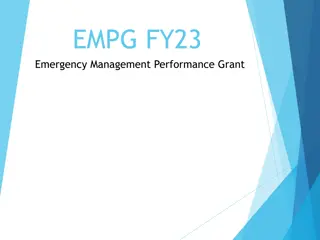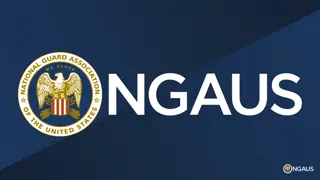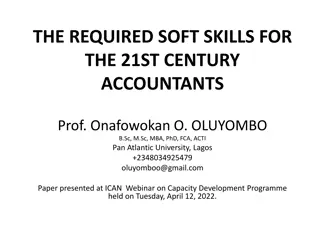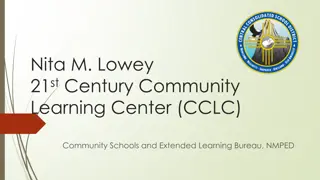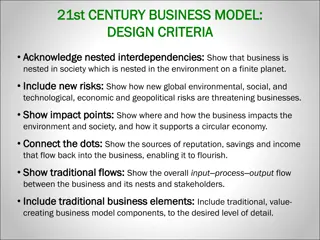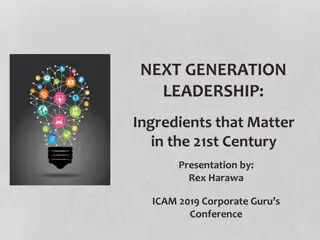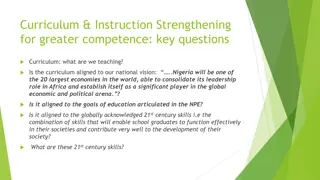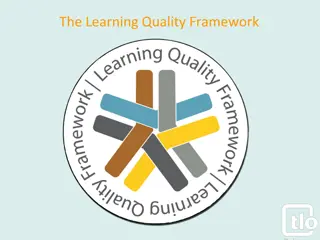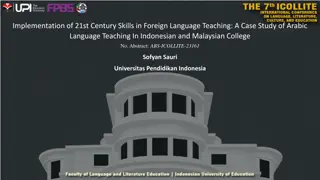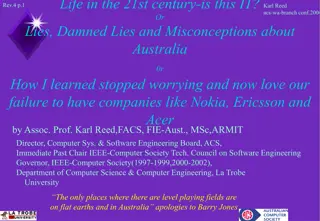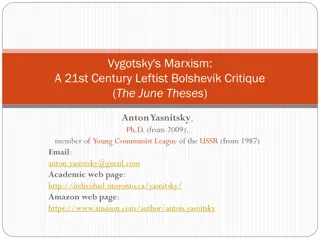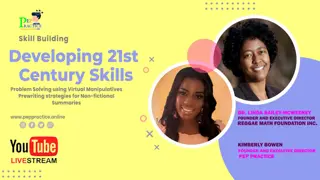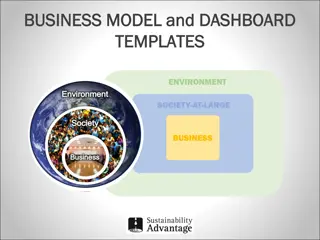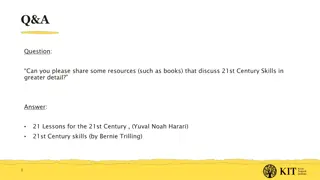
Grants Evolution: Simplifying Narratives
Discover the evolution of grant proposals from lengthy narratives to concise formats. Explore the changes in page limits, submission methods, and expectations from grantmakers over the years. Learn how to streamline your grant application process effectively.
Download Presentation

Please find below an Image/Link to download the presentation.
The content on the website is provided AS IS for your information and personal use only. It may not be sold, licensed, or shared on other websites without obtaining consent from the author. If you encounter any issues during the download, it is possible that the publisher has removed the file from their server.
You are allowed to download the files provided on this website for personal or commercial use, subject to the condition that they are used lawfully. All files are the property of their respective owners.
The content on the website is provided AS IS for your information and personal use only. It may not be sold, licensed, or shared on other websites without obtaining consent from the author.
E N D
Presentation Transcript
Say Goodbye to Long-Winded Narratives In 2000, Grants.gov was in its infancy. The length of a foundation proposal was 10 15 single-spaced pages of narrative, a cover letter, half- to full-page summary, and at least 10 pages of attachments. The average length of federal proposal was 80 double-spaced pages of narrative, a cover letter, full-page summary, and 40 pages of attachments. We were still learning about Logic Models and expressing outcomes. Nearly all proposals were sent via the US Postal Service or overnight courier. 3
Welcome to 2015 and Beyond Nearly 80% of all grant applications are sent electronically via web portal or e-mail. Foundation proposals average five single- spaced pages of narrative, a cover letter, and five to six attachments. Federal proposals limit the number of pages to upload with more than half of the allotment as required attachments. Narrative sections for online applications limited to 2,000 characters with spaces and punctuation or less instead of nearly 5,000 characters with spaces and punctuation in 2000. 4
We are Still Using Paper... Common Application Forms for selected foundations CT and MA offer these forms Submitted on paper through post office or via e-mail Require completed application form Narratives five and eight pages respectively Follow the guidelines and include headings for each questions/statement as a guide for the reviewer Small family foundations only want paper proposals 5
...And More Paper Federal Grant Applications 26 Federal agencies and department - different requirements Submitted electronically with strict page limits DHHS - ACF & HRSA Must adhere to proposal preparation guide requirements Maximum 100 double-spaced pages uploaded with 50 allocated for attachments through grants.gov NSF Must adhere to proposal preparation guide requirements Maximum 15 single-spaced pages for narrative Submit through Fastlane or grants.gov systems 6
What are Grantmakers Telling Us? Guidelines of several large foundations tell grantseekers to provide all the information required in a concise manner They ask us NOT to use all the space provided (online and paper) Use plain language Just get to the point! 7
What are Grantmakers Telling Us? Federal agencies are asking for the same "Applicants are strongly encouraged to provide a high- quality narrative that includes a compelling justification...This should be addressed in a concise manner; lengthy applications will not receive greater consideration." - Economic Development Administration, US Department of Commerce, 2015 Economic Development Assistance Programs Federal Funding Opportunity 8
What Does this Mean for Us? Our writing style must accommodate different types of reviewers Skimmers - mostly foundation and corporate reviewers Reads open and closing paragraphs, topic sentences of subsequent paragraphs Reviews bullet points, tables, charts, budget spreadsheets Lightly skims the rest of the content including footnotes or cited works Searchers - mostly government proposal reviewers Follows score sheets Looks for specific information in the required sections Deep Readers - all of the above Government reviewers MUST read the entire document and provide a score Foundation and corporate reviewers may or may not read the entire document 9
Think Like a Reviewer Get to the point quicker Be specific and clear as to your intent Provide additional information not required by the RFP Use headers to guide reviewers Place information in the required sections not elsewhere Incorporate success stories or examples Format your proposal using specific type fonts Incorporate visuals to help reviewers grasp concepts quickly Use tables to communicate statistics instead of burying them in long-winded paragraphs 10
What Would You Prefer? OR 11
Four Cs of Effective Grant Proposals Clear Active, engaging language makes it easy to read Short sentences Small paragraphs Comprehensive Detailed Anticipates every possible question of grant reviewer Concise Well-organized Gets to the point as quickly as possible Competitive Attainable outcomes that will impact the community Furthers the mission of the grantmaker Persuasive 12
Brief and to the Point We live in a society with limited attention spans... Put yourself in the shoes of the reviewer Reviewers of our grant proposals are people not computers (at least not yet!) How am I supposed to find time to read 50 to 100 grant proposals in a week for a single competition? I can't understand what they're trying to tell me. How many more proposals do I have to review before I can go to sleep tonight? 13
Brief and to the Point Reviewers want us to develop reader friendly proposals Write clearly, succinctly, and directly Use everyday language Keep it simple Use proper grammar and punctuation Eliminate verbose passages and language Use bullet points instead of a long lists separated by semicolons For online applications use a '-' or '*' Online systems do not recognize special symbols Stop using jargon and more than three acronyms Make the content flow 14
Brief and to the Point Think in short, firm sentences Cut every unnecessary word, but never sacrifice clarity for brevity Remember: Subject-Verb-Object I used the hammer. The organization obtained the required signatures. Eliminate words or phrases between the subject and the verb 15
Brief and to the Point Use a deductive writing style Get the point clearly in the first sentence (topic sentence) of a paragraph and use the remainder of the paragraph for support and documentation. Cuts to the chase, delivering information in an accessible and powerful way Makes easier for the reviewer to quickly check the logic of the argument before diving in for a deep read Makes it easier for the reviewer to find the information that corresponds to the scoring mechanism. 16
Brief and to the Point Example of Deductive Writing Style The population of rural Washington County grew 11.8% from 2000 to 2010 to 147,430 residents. Farmlands and very small towns dot the landscape. Hagerstown, the county seat and only city, has a population of 39,662. According to the 2010 US Census, there are 56,036 women over the age of 18 living in the county. Of the total population, 9.6% are African American, 1.4% are Asian, and 3.5% are Hispanic. Compared to 2000, the number of minorities living in the county grew at proportionally higher rates: African Americans by 38%, Asians by 95%, and Hispanics by 225%. The majority of minorities and immigrants reside in Hagerstown with 15.5% African American and 5.6% Hispanic. Breast cancer is the number one cancer treated at JMCC, representing 20.3% of all cancers diagnosed. In 2012, JMCC diagnosed 185 cases of breast cancer, up 4% from 178 cases in 2011. According to the National Cancer Institute, the incidence of breast cancer in Washington County is 115.6 for 2005-2009. This follows the trend identified in the Komen 2011 Community Profile report that shows the incidence of breast cancer for the county has decreased from 119.1 during 2002-2006 to 115.4 during 2003- 2007. The National Cancer Institute also reports that the number of deaths from breast cancer in Washington County continue to decline. For the period of 2006-2010, the breast cancer mortality rate for Washington County was 19.8, dropping from 20.8 from 20005-2009 placing it lower than that of the United States at 22.6 and Maryland at 24.5. 17
Brief and to the Point William Strunk, Jr, author of The Elements of Style "A sentence should contain no unnecessary words, a paragraph no unnecessary sentences, for the same reason that drawing should have no unnecessary lines and a machine no unnecessary parts. This requires not that the writer make all of his sentences short, or that he avoid all detail and treat his subjects only in outline, but that every word tell." 18
Brief and to the Point Forget the witty prose and just say what you mean Scintillate, scintillate, diminutive celestial body It is impossible to determine the value of a leather-bound volume by its exterior Veracity is the superlative course of action. Pulchritude does not extend beneath the surface of the epidermis. 19
Brief and to the Point George Orwell said: "Never use a long word where a short one will do." "If it is possible to cut a word out, always cut it out." 20
Brief and to the Point Vary length of paragraphs Minimum two sentences per paragraph Provide no more than 10 lines per paragraph Average sentence should have no more 15 to 17 words Passive voice less than 10% Flesch Reading Ease score of ~40 - the higher the score, the easier it is to read. Flesch-Kincaid Grade Level at 10.5 or 12 21
Brief and to the Point A few words about Writing Style for grant proposals Your organization is asking for money - do not beg Different in content from an annual appeal letter Eliminate the phrase: With your help, we can make a difference in the lives of This is a business transaction Focus is on the community benefit not how your organization will benefit Do not write to shock - If we don't receive money, a thousand people will starve. Make an emotional connection but stick to the facts Rely on published statistics, data, and case studies to make your case for support Don't make the proposal too dry, but don't overpower it with flowery prose 22
Brief and to the Point Avoid clauses, particularly introductory causes and phrases Introductory clauses start with adverbs like after, although, as, because, before, if, since, though, until, when, etc. Introductory phrases also set the stage for the main action of the sentence, but they are not complete clauses. Rewrite to get to the point 23
Brief and to the Point Eliminate redundancy do not use the same word twice in the same sentence Word Web free dictionary/thesaurus www.wordwebonline.com Thesaurus.com Microsoft Word Thesaurus NEVER rely on Microsoft Word grammar program Grammar Slammer at http://englishplus.com/grammar/ Grammar Expert Plus at http://www.wintertree- software.com/app/gramxp/index.html (free trial that doesn t expire) 24
Brief and to the Point Obtain a style and grammar book for quick reference! The Handbook of Good English, Edward D. Johnson The Elements of Style, William Strunk, Jr. and EB White The Chicago Manual of Style, University of Chicago Press The MLA Style Manual, Walter S. Achtert and Joseph Gibaldi 25
Brief and to the Point Write in an active voice, avoid being passive Writing in the past tense or passively can: Weaken your case for support Disrupts the reviewer s focus Writing in an active voice is easier to understand, shows determination We will vs. we would like to or we want to Eliminate would, could, should will, can, shall Restructure passive sentences into active ones All programs are clinically supervised by a licensed clinical social worker (LCSW). A licensed clinical social worker (LCSW) supervises all programs. 26
Brief and to the Point Get rid of wishy-washy language The program budget is projected to be approximately $70,000. We hopefully can find other funders to support our program. If you give us a grant, we can implement the program. It is currently anticipated that we will collaborate with a few other neighborhood organizations. 27
Brief and to the Point Use strong, determined language when creating objectives and outcomes Use power verbs Increase Improve Reduce Empower Engage Avoid weak verbs Provide Manage Create Develop Offer Eliminate the preposition 'to' before the power verb ALWAYS bullet point objectives and outcomes 28
Brief and to the Point Use abbreviations wisely Spell out acronyms once Use Chicago Manual of Style version: ( ) after spelling out the full name or title The Centers for Disease Control (CDC) previously underreported Don t assume that if you spell out the full name or title that the reviewer will catch the acronym AP Style The Centers for Disease Control previously underreported the rate of HIV infections in America. The CDC apologized for the error. This is not TXT SPK - OMG!! Do not speak in parentheses Reviewers don t read passages in parentheses If you have to say it using parentheses, you aren t making a point Rewrite without parentheses and see how the thought flows 29
Brief and to the Point Be aware of misused words and terms Internet - upper case website - lower case email - one word, no hyphen data - plural, datum - singular database - all one word % or percent - just be consistent online - one word United States - use as noun U.S. - use as adjective, not US or USA toward not towards - only if British compliment versus complement it's versus its - know the difference affect versus effect summer, spring, fall, winter - lower case project manager versus Susan Smith, Project Manager 30
Brief and to the Point Be aware of proper punctuation Period and comma ALWAYS inside single (') or double (") quotation marks - even at the end of a sentence or quoting a single word. ...the report showed that 42% of teens in the district were 'overweight,' 25% were 'obese,' and 10% were 'morbidly obese.' Oxford comma versus no comma Use semicolons properly NOTused to separate long lists of fragmented sentences Use when joining two independent clauses or complete sentences 31
Brief and to the Point Avoid qualifiers - they suck the blood out of good prose May Somewhat A few Very Rather Little Quite Avoid the use of i.e., e.g., or etc. Instead, organize your examples. 32
Brief and to the Point Page format One-inch margins 12-point type font Times New Roman CG Times Garamond Single space unless otherwise directed Left justify ONLY never fully justify Keep right margin ragged Easier on the eyes of the reviewer Number each page Automatic numbering in upper right or bottom right or bottom center Use header or footer to also include name of organization on each page DO NOT number first page of narrative 33
Brief and to the Point ALWAYS use block paragraphs instead of indenting 5 spaces or .5" For online applications, the space between the paragraphs equals 1 character and 5 spaces equals 5 characters Cleaner, easier read for the reviewer Leave as much white space as possible 34
Brief and to the Point AVOID Using bold face type and underlining within the narrative Slows down the reader Skimmers will only see the emphasis words Acceptable for section headings and subheads only Section headings should be in CAPS and underlined Subheads should be in Upper and Lower Case and underlined Italics are acceptable when referring to the name of the project/program 35
Brief and to the Point Be aware of character counts - spaces are characters! 3,500 characters w/spaces ~ 555 words 2,600 characters w/spaces ~ 500 words 2,000 characters w/spaces ~ 300 words 800 characters w/spaces ~ 150 words In Microsoft Word, go to Review (2007+) then click on Wordcount, find Characters (with spaces) Microsoft Word does not count punctuation! Avoid Oxford commas if you can Use semicolons sparingly _______ Characters (with spaces) = 2,000 characters in an online application box 36
Brief and to the Point Proposal writing is persuasive Gets the reviewer to see your point of view Convinces them that you can achieve the outcomes Always focus on achieving the mission of the grantmaker! Speak in terms of quantity and quality Discuss current and future target populations in detail Show numbers of those currently served AND those you expect to serve in the future Discuss the distinctiveness of the program Identify current and anticipated level of resources Share past evaluation data Forecast what will happen if the problem is not addressed 37
Brief and to the Point (cont.) Outline benchmarks for activities in spreadsheet format Gantt Chart or timeline Use calendar format with month and year references across top Provide tasks and person(s) responsible for achieving the benchmark in left column Express the start and end dates for each activity Task Jan-Jun Jul-Oct Nov-Dec January 1. 2. 3. 38
Brief and to the Point (cont.) Flowcharts Gives reader sense of processes, a roadmap to the workings of the project or program Helps to understand the dynamics of change for participants or organization Client referrals from community partners Intake and assessment Case management Client begins classroom sessions GED, post-secondary education Business etiquette, soft skills Client receives wrap-around services before exiting Housing Employment 39
Brief and to the Point (cont.) Use Visual Aids Within the narrative, selectively insert tables and charts Center the graphics on the page Do not wrap-text around or position on the margin 40
Brief and to the Point (cont.) Example of What NOT to Use: 41
Brief and to the Point (cont.) Example of What NOT to Use: 5 4 3 2 Series 1 Series 2 Series 3 1 0 42
Brief and to the Point (cont.) The perfect use of a chart in a grant proposal 43
Remember Your proposed project/program must make an impact on the community you serve! Successful proposals describe changes that will be beneficial to the community Federal government wants to see collaboration among organizations to work together to make change Competition is fierce in securing government grants. Planning and advanced preparation is key to success! 44
Recommended Reading Write Tight by William Brohaugh. (ISI Books, 2002) ISBN 1-882926-88-9 The Elements of Style - 4th Edition by William Strunk, Jr. and EB White. (Allyn & Bacon, 2000) ISBN-10 0205313426 OR ISBN-13 987-0205313426 The Chicago Manual of Style - 15th Edition by the University of Chicago Press. (University of Chicago Press, 2003) ISBN 0-226-10403-06 Brevity Isn t Enough - You Need to Write - Take the Fat Our of Your Writing by Kathy Henning. http://hbswk.hbs.edu/archive3443.html Drowning in Paperwork: Distracted from Purpose. Project Streamline. http://www.projectstreamline.org/projectstreamline.org/documents/PDF_Report_ final.pdf Online Applications and Reporting. Project Streamline. http://www.projectstreamline.org/sites/projectstreamline.org/files/Online%20App lications%20and%20Reporting.pdf 45
Thank You! Diane Gedeon-Martin 583 Goodale Hill Road Glastonbury, CT 06033-4022 www.write-source.com diane@write-source.com (860) 657-9734 46



